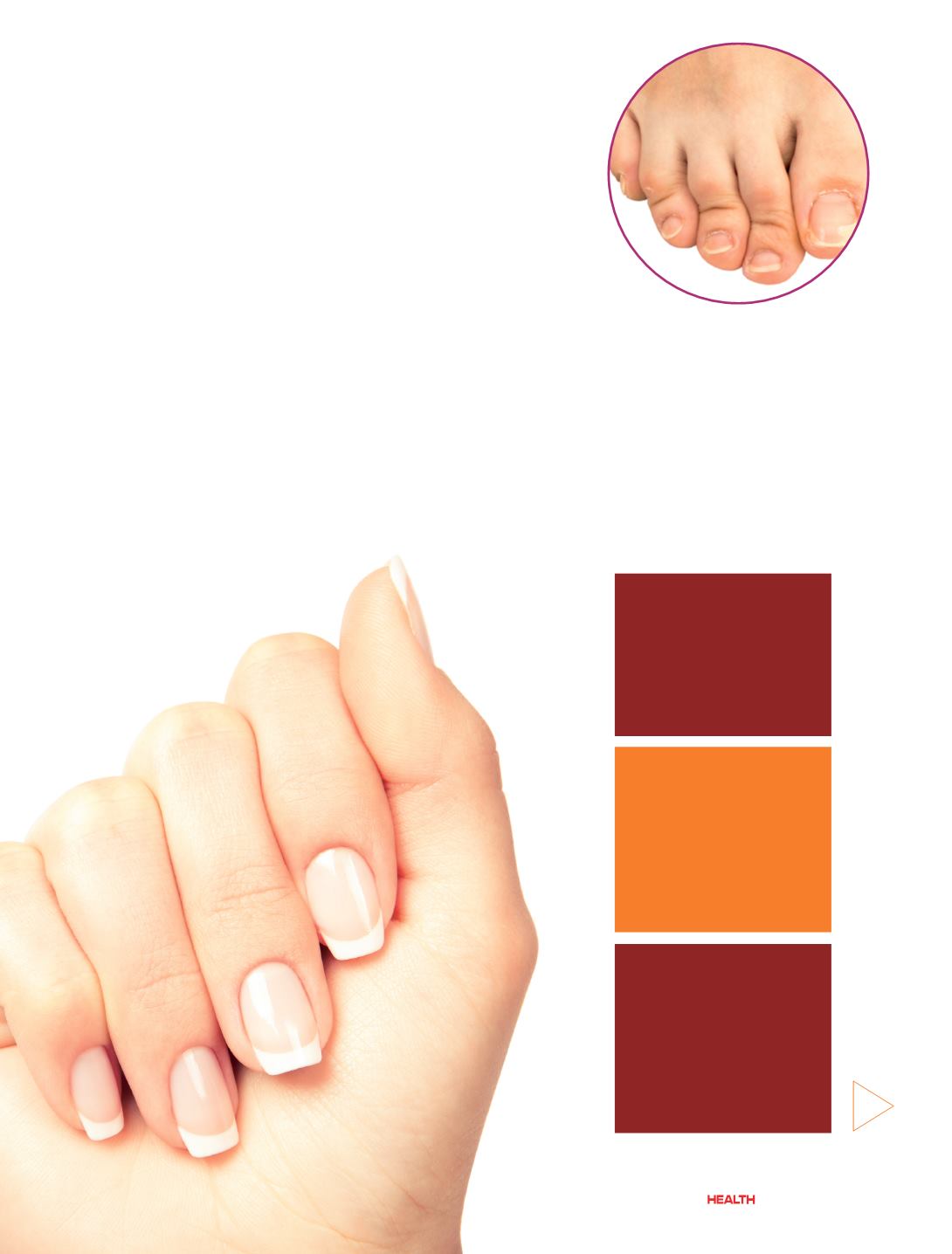

Leukonychia or
White Discoloration
Dr. Markandeya defines this
as a white area on the nail and
may be exhibited in cases of
hypoalbuminemia, malnutrition,
kidney and liver disease and
uremia. “Mees’ lines are a true
leukonychia that have been
traditionally associated with
arsenic toxicity while Muehrcke’s
lines are apparent leukonychia
associated with hypoalbuminism,”
she says while Lindsay’s nails
(half-and-half nails) are white
proximally and brown-red distally
and are associated renal disease,
psoriasis, and chemotherapy.
Terry’s nails are white proximally
with one millimeters to several
millimeters of brown-red distally
and are associated with cirrhosis,
congestive heart failure, diabetes,
and aging. Punctate leukonychia,
she tells, is characterized by white
spots one to three millimeters
in diameter occurring singly or
in groups almost
exclusively on
finger nails.
“They are
usually due
to repeated minor trauma to
the matrix,” she says and the
evolution of the spots is variable;
appearing generally on contact
with the cuticle, they grow distally
with the nail. Approximately
half of them disappear as they
migrate towards the free edge. Dr.
Markandeya advises a check-up
by the dermatologist along with
laboratory blood tests will help
determine the systemic disease
which has to be treated.
Onychoschizia or
Brittle Nails
This is characterized by distal
peeling and separation of the
nail plate in layers at the free
edge. “This makes the nail fragile
and subject to chipping and
fractures,” says Dr. Markandeya.
“Irritant detergents and excessive
water exposure exacerbate this
condition and essentially
environmental
and occupational
factors that produce
a progressive
dehydration of
the nail plate play
an important
part in the
development of idiopathic nail
brittleness,” she tells. “The lipid
content of the nail is influenced
by sexual hormones and decreases
after menopause, which explains
the high prevalence of brittle nails
in postmenopausal women.”
Treatment
While moisturizing may produce
some relief, oral Biotin daily has
been shown to be helpful with
brittle nails.
Koilonychia
This is spoon-like changes
in the nail plate, tells Dr.
Markandeya and may be
hereditary. “Acquired causes
include hypothyroidism, anemia,
trauma, infections, psoriasis, and
lichen planus,” she says.
Clubbing
This is indicated by increased
longitudinal and transverse
curvature of nails. “This is
associated with cardiopulmonary
diseases, sarcoidosis, cirrhosis,
gastrointestinal disease, toxin
exposure, and/or trauma,” she
says.
Splinter Hemorrhage
This is defined as lines of
extravasated blood visible
beneath nail plate and is
associated with trauma.
“Systematic associations
include endocarditis, diabetes,
hypertension, and lupus, as well
as many others,” she says.
21
May/June 2015















